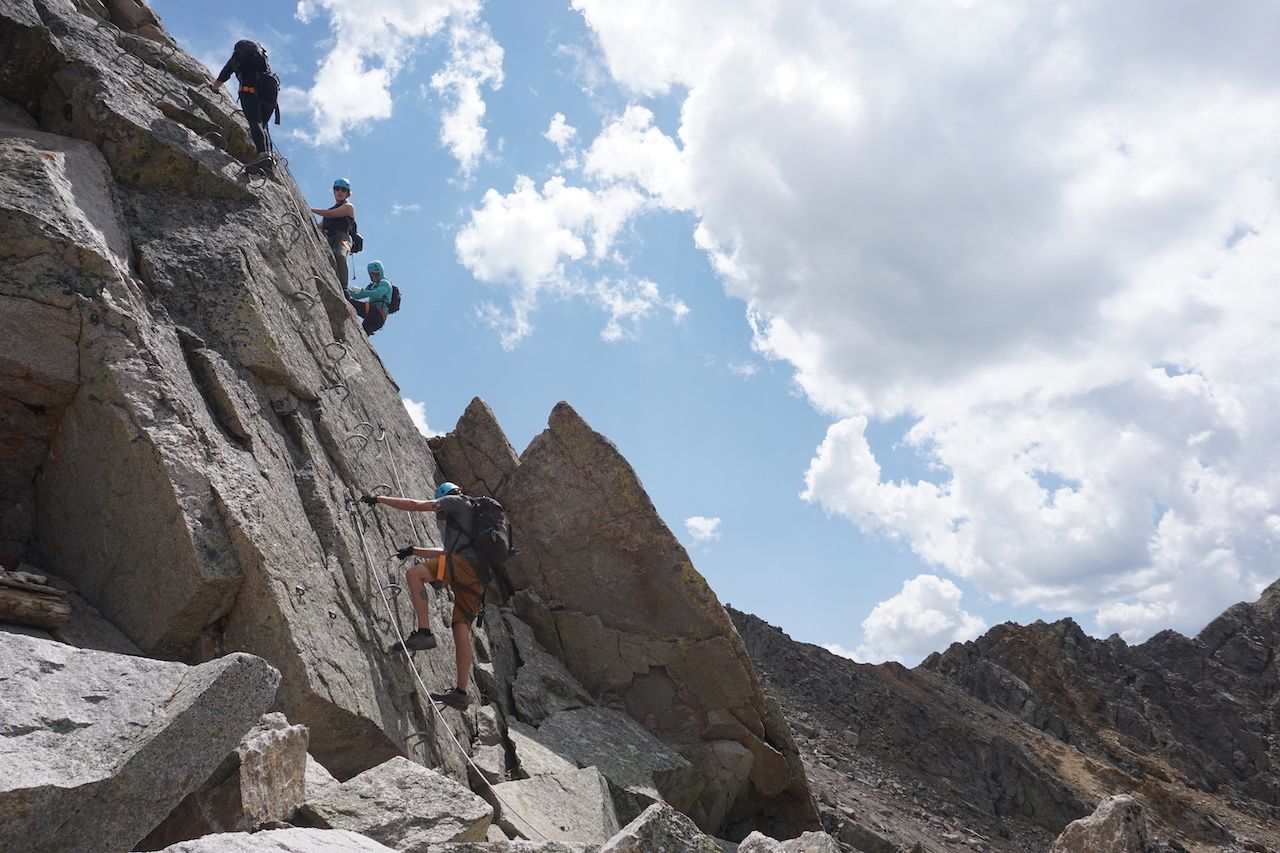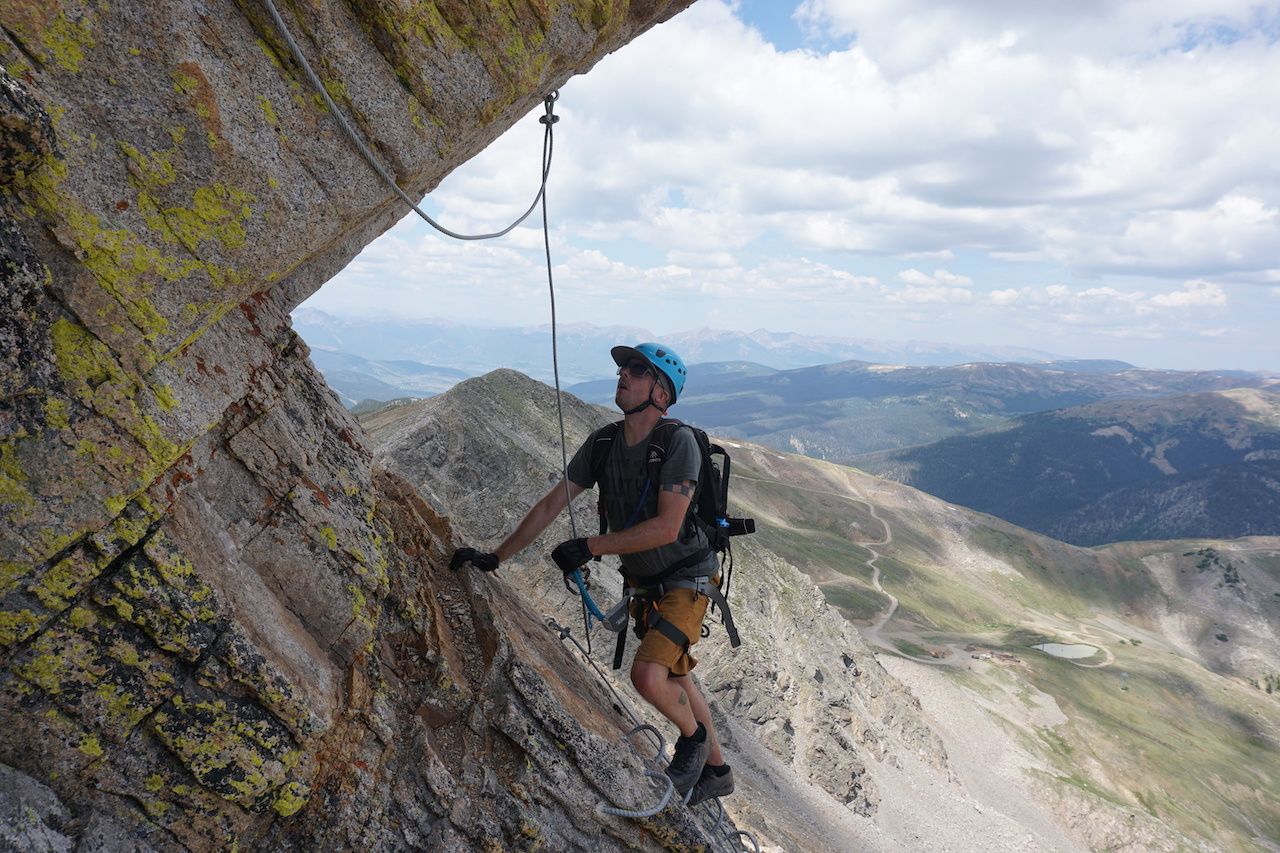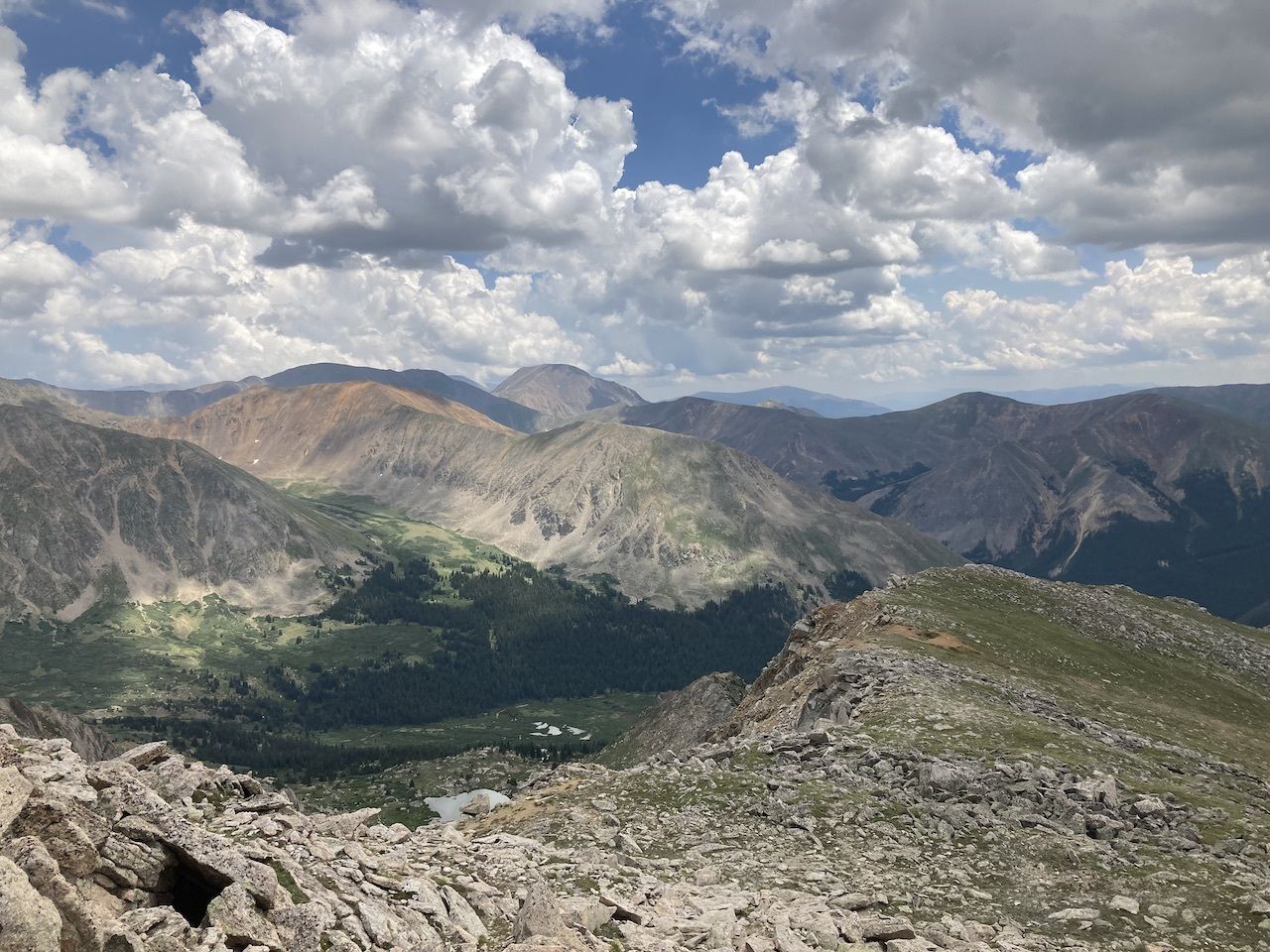The highest, and likely most exciting, via ferrata in all of North America opened this summer at Arapahoe Basin ski area in the high Rockies of Colorado. It’s the most thrilling way to make the transition to outdoor climbing.
While indoor climbing at a gym is relatively safe and predictable, outdoor climbing can be intimidating. Mother Nature didn’t design the world’s rock faces and crags with perfectly placed hand- and footholds, after all. In a via ferrata, on the other hand, you’re harnessed and on the rock, much like trad climbing, but with the benefit of steel holds and a fixed steel line. Here’s what to expect at the record-breaking via ferrata at Arapahoe Basin.



